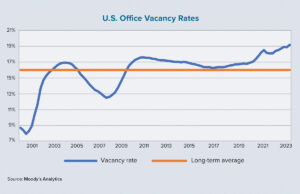In the wake of the COVID-19 outbreak, the only way to address the outlook for the hotel sector is head on without making the situation appear better than it is. The key questions are whether any financing is available and, if so, where can you get it and how much will it cost?
The simple answer is that some lenders are still active in the hotel sector, but they are much more conservative — for good reason. Generally speaking, values for U.S. commercial real estate have been crushed, especially for hospitality assets. Also, just when you thought it was safe to start scouring the market for the few lenders willing to do hospitality loans, an uptick in COVID-19 cases threatened the positive momentum and set back the market again this past summer. As more states paused their reopening plans, a resurgence in cases once again dried up the demand for lodging during what is normally the height of the tourism season.
Hotel values plummeted in the wake of COVID-19. Even newer hotels have lost as much as 30% of their value. To put this sector’s challenges into concrete terms, consider the real-world impact of that decline. If a hotel was built 18 months ago for $28 million, its appraised value might now be in the neighborhood of $19 million. Needless to say, any owner attempting to refinance a loan on that property isn’t likely to succeed. This is not necessarily because a lender is unwilling to refinance at a certain leverage level. More likely, the borrower does not want to contribute any more equity to the capital stack to make up the difference between the bridge loan amount and the construction loan amount.
Lenders have not entirely shunned the hotel sector, but they are far more selective. It is highly unlikely, for example, that a lender will finance the construction of a new suburban hotel, given the current overcapacity in the market due to the lack of business and leisure travel. Lenders will, however, consider acquisition loans for existing hotels, particularly landmark properties in major metropolitan markets.
New reality
For all hotels, however, there is a new reality. When financing a hotel loan, commercial mortgage brokers and their clients should stop approaching lenders with complaints and speculation, and view the post-pandemic hotel market as the new normal. If you want to close a loan in this environment, you must accept where we are and learn to work within this reality. And that reality is harsh.
Hotel occupancy rates have plummeted across the board in the U.S. Early this past August, the national occupancy rate had climbed to slightly less than 50%, but that was down from 71.4% occupancy in August 2019, STR reported. This drop was directly related to the health crisis. In April 2020, hotel occupancy bottomed out at 22%, according to STR. Note that this was near the start of the pandemic when many states had not yet reopened. Occupancy rates have been in a constant state of flux since then.
For the week ending July 25, 2020, for example, the top 25 hospitality markets in the U.S. recorded an occupancy rate of 40.8%, STR reported. The Norfolk, Virginia metro area was the only one of these markets with an occupancy rate that exceeded 60%, but that was during the height of Norfolk’s seasonal market. In prior years, Norfolk’s occupancy rate topped 98% occupancy during peak season.
Lenders that are viewing these staggering drops in occupancy are wondering about a hotel’s future cash flows and how a borrower will service debt. There also is an additional underwriting problem associated with a lack of historical data to compare the COVID-19 crisis with other downturns. All of this means that hotel lenders are going to be much more conservative. They also will expect higher returns on the loans they do fund to compensate for the risk.
Stricter terms
This harsh reality has been accompanied by tougher terms. Loan-to-cost ratios for hotels have fallen to a maximum of about 50%. Lenders also want to see real and verifiable cash equity in the deal. Don’t assume that you can use an alternate financing mechanism, such as Property Assessed Clean Energy (PACE) financing as equity. Lenders realize that a PACE loan is simply more debt that burdens the asset. Unproven financing structures won’t ring any bells with lenders.
In today’s market, you need to back up a hotel loan with a deep-pocketed guarantor willing to support the asset with cash if and when needed. Be realistic, too, even if your hotel deal is in a major metro such as New York City or San Francisco. Hotel sectors in major metros have been badly hurt by the loss of business and leisure travel. In some large cities, hotel occupancy dropped to as low as 40%. Last year, these rates were in the 80% range. As long as COVID-19 continues to rage, you should be prepared to demonstrate how your deal provides debt-service coverage, regardless of where the hotel is located.
Your clients also can expect to pay higher interest rates on hotel loans. Risk versus reward is a major consideration for every lender. Do not expect illogical rates and terms. The risk has risen substantially and so too have the rates. Don’t be surprised if your quote is a thousand points above the 30-day London Interbank Offer Rate.
This is the new reality in hotel financing. Of course, the situation could change. There is hope for the early rollout of a coronavirus vaccine. Although various pharmaceutical research groups may be drawing closer, it could take several months or more before an effective vaccine is approved and produced in sufficient quantity to change the outlook for business and tourism travel. The bottom line is that the new normal for the hotel industry is likely here to stay for some time.
We have become a nation of Zoom meetings and telephone conferences. Family vacations have changed from hopping on a plane bound for Disneyland or Europe to stay-at-home vacations or renting a camper and social distancing at one of our national parks. Yes, funds are still available for hotels and lenders need to deploy capital to make money. Be prepared, however, to make your case before a skeptical audience. You’ll need bring documents and present facts. Your deal, most of all, needs to make sense. ●
Author
-

Jerry Sager is senior managing director of First National, a leading principal lender to the hospitality industry, mixed-use commercial properties, golf courses and special-asset owners. With more than 25 years of experience in lending to property owners and management companies, his team has provided financing for the acquisition, construction, expansion and refinancing of specialized assets throughout the U.S.




